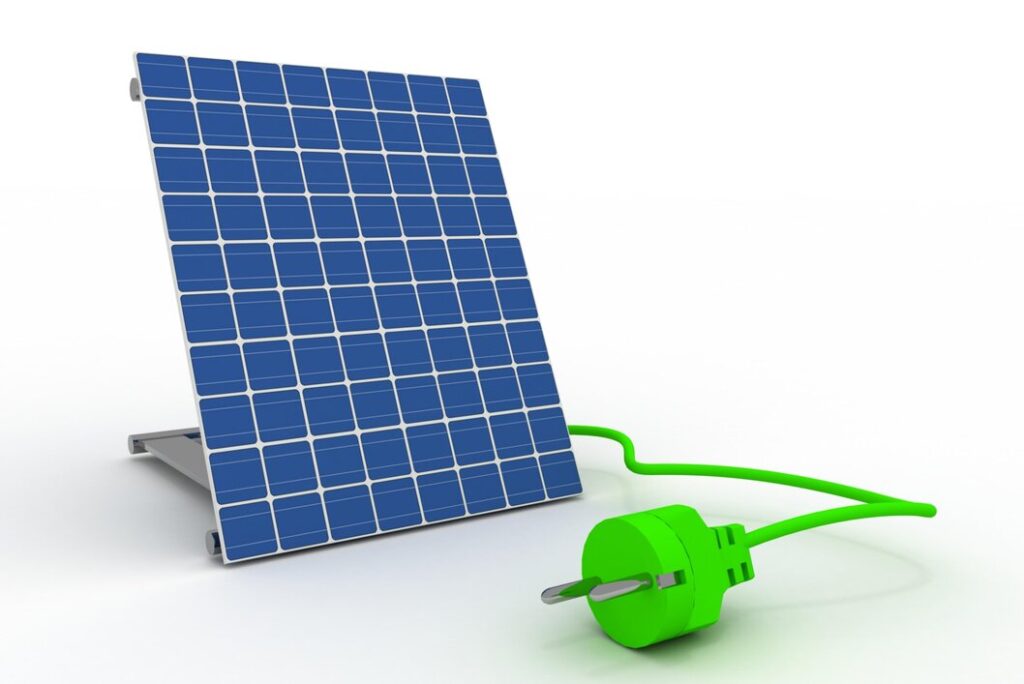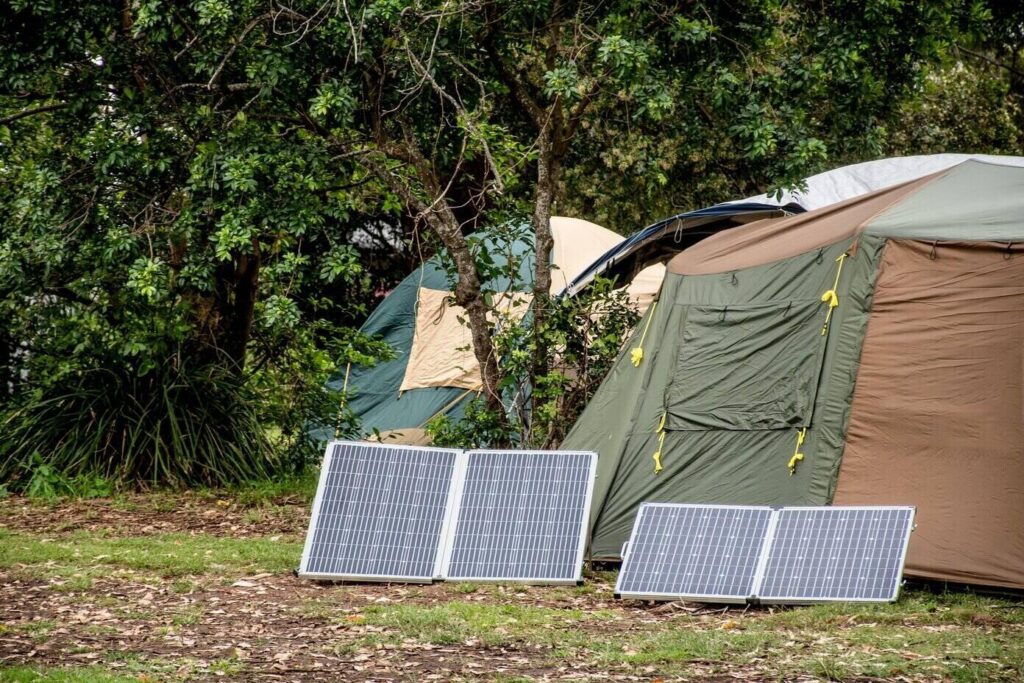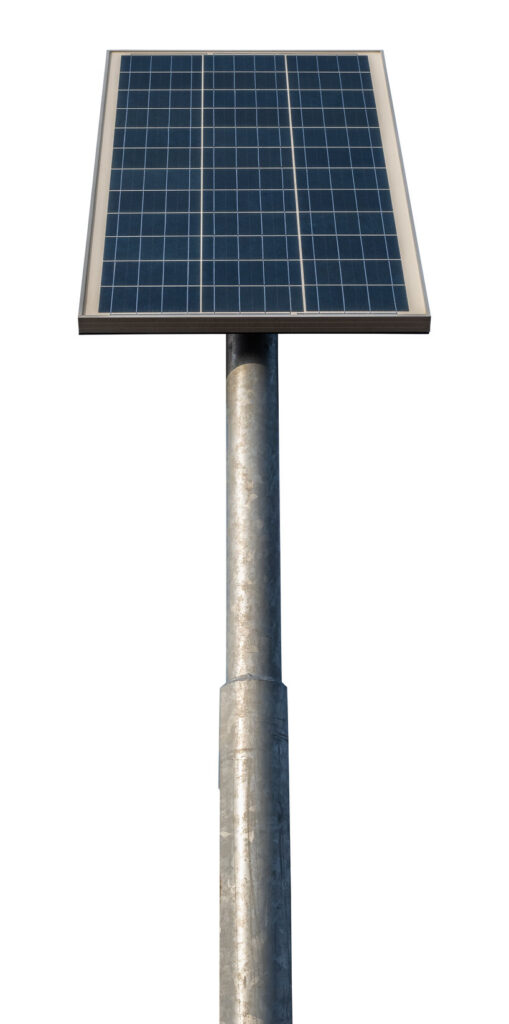The Future of Portable Solar Panels

With the increasing demand for renewable energy sources and the growing concern about the impact of fossil fuels on the environment, portable solar panels have emerged as a promising solution for generating power on the go. These panels, which harness the energy of the sun and convert it into electricity, are becoming increasingly popular among outdoor enthusiasts, travelers, and those who frequently experience power outages. In this article, we will explore the future of portable solar panels and their potential to revolutionize the way we power our devices.

Portable Solar Panels and Their Advantages
Portable solar panels are lightweight and compact, allowing users to easily carry them wherever they go. They can be folded or rolled up into a small package, making them highly convenient for camping trips, hiking adventures, or any other outdoor activities. Unlike traditional power sources, which rely on fossil fuels and can be expensive and harmful to the environment, portable solar panels utilize solar energy, a clean and renewable source of power. This not only reduces our carbon footprint but also helps to promote a sustainable future.
The Evolution of Portable Solar Panel Technology
In recent years, there have been significant advancements in portable solar panel technology. Solar cells, the building blocks of solar panels, have become more efficient at converting sunlight into electricity. This means that smaller panels can now generate a higher amount of power, making them even more useful for charging smartphones, tablets, laptops, and other electronic devices. Furthermore, portable solar panels now come equipped with advanced charging technology, allowing for faster and more reliable charging, even in low light conditions.
One of the key developments in portable solar panel technology is the introduction of foldable panels. These panels can be easily unfolded and set up to capture maximum sunlight, and then folded back into a compact size for storage and transportation. This innovation has made portable solar panels even more versatile and user-friendly, as they can now be used in a variety of settings and environments.
The Rise of Portable Power Stations
Another exciting trend in the future of portable solar panels is the emergence of portable power stations. These stations are essentially portable solar generators that allow users to store the energy generated by their panels and use it later when needed. This is particularly useful for situations where access to power outlets is limited or nonexistent, such as during camping trips or power outages.
Portable power stations typically come equipped with multiple power outlets, USB ports, and even DC outputs, allowing users to charge multiple devices simultaneously. They can provide power to a wide range of devices, from smartphones and laptops to power tools and small appliances. Some of the best portable power stations on the market today include the Jackery Solar Generator and the Goal Zero Yeti, which offer high-capacity battery storage and efficient power generation.

The Future of Portable Solar Panels: Expanding Applications
As the technology continues to advance, the future of portable solar panels looks promising. Not only are they becoming more efficient and user-friendly, but they are also finding new applications in various industries. For example, portable solar panels can now be used to power remote monitoring systems, such as security cameras and weather stations. They can also be integrated into outdoor furniture, allowing for charging of devices while enjoying the outdoors.
Furthermore, portable solar panels are increasingly being utilized in disaster relief efforts, where access to a reliable power source is crucial. In situations where traditional power stations are damaged or inaccessible, portable solar panels can provide a lifeline by generating clean and renewable energy. This not only helps to power essential medical equipment but also provides a sense of normalcy and connectivity during challenging times.

The Importance of Investing in Renewable Energy
As we look towards the future, it is clear that investing in renewable energy sources, such as portable solar panels, is of utmost importance. Not only do these panels offer a viable alternative to traditional power sources, but they also help to reduce our dependency on fossil fuels and mitigate the impact of climate change.
In conclusion, the future of portable solar panels is bright. With advancements in technology, we can expect these panels to become even more efficient, lightweight, and affordable. They have the potential to revolutionize the way we generate and use power, and contribute to a more sustainable and eco-friendly future. Whether you are an outdoor enthusiast, a traveler, or simply someone who wants to have a reliable backup power source, investing in portable solar panels is a smart choice that will benefit both you and the planet.

Battery Power Stations for Emergency Preparedness:
Ensuring a Reliable Backup Plan Battery power stations have become an essential part of emergency preparedness plans, ensuring a reliable backup plan in times of need. In the event of a power outage or natural disaster, these portable power stations provide a reliable source of electricity to keep essential devices and appliances running. From charging phones and laptops to powering medical equipment and essential home appliances, battery power stations offer a versatile solution for emergency situations. With advancements in battery technology, these stations are now more efficient and compact, allowing for easy transport and setup. They can store a significant amount of power and can be recharged using solar panels or by plugging them into a power source. This flexibility ensures that even in the absence of fuel or available electrical outlets, battery power stations can continue to provide backup power for extended periods. In times of uncertainty, having a reliable backup plan like battery power stations can provide peace of mind and ensure the safety and well-being of individuals and families.
Embracing Portability:
Foldable solar panels are a revolutionary concept in the field of renewable energy. These panels are designed to be easily portable and flexible, allowing users to conveniently carry them around and set them up wherever they need. The unique folding design enables these panels to be compact and lightweight, making them ideal for outdoor activities such as camping, hiking, and picnics. This portability also makes them suitable for emergency situations, where power may be scarce. The compact size of foldable solar panels also allows for easy storage when not in use. One of the major advantages of foldable solar panels is their ability to convert sunlight into usable energy. They harness the power of the sun and convert it into electricity, which can then be used to power various devices and appliances. This makes foldable solar panels a sustainable and eco-friendly alternative to traditional energy sources. With the increasing focus on renewable energy solutions, foldable solar panels have emerged as a convenient and efficient way to harness the power of the sun.

Choosing the Right Size and Type of Home Backup Generator for Your Needs
Firstly, you need to consider the size of your home and the appliances you want to power. Calculate the total wattage required by adding up the power ratings of all essential devices, such as refrigerators, sump pumps, and lighting fixtures. A generator with a large power output will be necessary for larger homes or those with many power-hungry appliances. Secondly, determine the type of generator that suits your needs. Portable generators are more convenient and less expensive, while standby generators offer hands-free operation and can power your entire home. Additionally, consider the fuel source options. Gasoline generators provide high power output but require frequent refueling, while propane or natural gas generators offer longer run times and better fuel efficiency. Lastly, consider safety features such as low-oil shutoff and carbon monoxide detectors. Overall, choosing the right size, type, and fuel source for your home backup generator ensures that you have the necessary power during emergencies.
Key Drivers and Restraints of Portable Solar Power Generator market
This market is primarily driven by the increasing demand for clean and renewable energy solutions. With the growing concerns over climate change and the depletion of natural resources, there is a rising need for alternative sources of power generation. Portable solar power generators offer a convenient and sustainable solution, enabling users to generate electricity for various applications on the go. Additionally, the advancements in solar panel technology have led to increased efficiency and reduced costs, making portable solar power generators more affordable and accessible to a wider range of consumers. Moreover, the rising popularity of outdoor recreational activities such as camping and hiking has also contributed to the demand for portable power solutions. However, there are certain key restraints that could hinder the growth of the market. These include the high initial costs of portable solar power generators and the limited power output compared to traditional power generators. Additionally, the dependency on sunlight for charging and the limited battery capacity can also pose challenges in certain locations or during extended periods without sunlight.
Going Green The Next Generation of Portable Solar Charging Stations
Portable solar charging stations are quickly becoming the next big thing in green technology. With the increasing concern for environmental sustainability, more and more people are looking for ways to reduce their carbon footprint and embrace renewable energy sources. The next generation of portable solar charging stations takes this commitment to a whole new level. These stations are designed to be lightweight and compact, making them easy to transport and set up anywhere. They harness the power of the sun and convert it into usable energy, allowing users to charge their devices on the go. Whether you’re on a camping trip, at a music festival, or simply out and about, these solar charging stations provide a reliable and sustainable way to power your electronics. Furthermore, these stations are equipped with multiple charging ports, so you can charge multiple devices simultaneously. With the advancements in solar panel technology, these charging stations are becoming more efficient and powerful, making them a viable option for anyone looking to embrace a greener lifestyle.
Definition and purpose of portable solar panels
Portable solar panels are compact devices that utilize photovoltaic technology to convert sunlight into electrical energy. They are designed for easy transportation and set-up in various settings, making them ideal for outdoor activities, emergencies, or off-grid situations.
Unlike traditional fixed solar panel installations that require extensive mounting structures and complex wiring systems, these portable counterparts offer flexibility and simplicity. The primary purpose of portable solar panels is to provide individuals with an independent source of clean energy when conventional power sources are not available or reliable.
These panels can charge batteries or directly power electronic devices like smartphones, laptops, camping equipment, or even small appliances. Moreover, they play a crucial role in reducing dependence on fossil fuels while promoting sustainable living practices.
Growing demand for renewable energy solutions
In recent years, there has been a remarkable surge in public awareness regarding environmental issues such as climate change and resource depletion. As a result, there is an increasing demand for renewable energy solutions that can mitigate the adverse effects of conventional fossil fuel-based power generation. The depletion of traditional energy resources coupled with rising concerns about greenhouse gas emissions has fueled this demand further.
Governments worldwide have recognized the urgency to transition towards cleaner alternatives by setting ambitious renewable energy targets. Consequently, industries and individuals alike are actively seeking sustainable energy options that offer reliability, affordability, and ease of use.
Importance of exploring the future possibilities of portable solar panels
While portable solar panels already provide valuable benefits, it is crucial to explore their future possibilities to unlock their full potential as a renewable energy solution. By investing in research and development, we can enhance the efficiency, durability, and versatility of these devices. The future of portable solar panels holds immense promise for various sectors, including outdoor enthusiasts, emergency response teams, military personnel, and off-grid communities.
Additionally, advancing the technology behind portable solar panels offers exciting opportunities for integrating them into wearable devices and transportation systems. Thus, exploring the vast horizons of portable solar panels is not only essential but also presents a pathway towards a more sustainable future.
Brief History and Evolution of Portable Solar Panels
Portable solar panels have come a long way since their inception. The roots of this technology can be traced back to the 1839 when scientists and engineers began exploring ways to harness the power of the sun in compact and portable forms. Early versions of portable solar panels were bulky, inefficient, and expensive, making them impractical for widespread use.
Over time, advancements in photovoltaic (PV) technology revolutionized the field of portable solar panels. The development of more efficient and durable PV cells allowed for smaller and lighter panels without compromising their energy output.
Additionally, innovations in manufacturing processes led to significant cost reductions, making portable solar panels more accessible to consumers. The evolution of portable solar panels also brought about enhanced features such as foldable designs that allow for easy transportation and storage.
These new designs address one of the main challenges faced by early models – their lack of portability. Today’s portable solar panels are sleek, lightweight, and highly efficient compared to their predecessors.
Advantages and Benefits of Using Portable Solar Panels
The environmental sustainability aspect is one of the most compelling advantages offered by portable solar panels. By harnessing clean energy from the sun, these devices contribute to reducing greenhouse gas emissions that are harmful to our planet’s ecosystem.
In contrast to conventional energy sources like fossil fuels or nuclear power plants, which emit carbon dioxide or radioactive waste respectively, portable solar panels produce zero emissions during operation. Another key benefit lies in the energy independence they provide.
Portable solar panels empower individuals with off-grid capabilities by enabling them to generate electricity anywhere there is sunlight available. This proves invaluable in remote areas lacking access to electricity grids or during emergency situations where power outage occurs.
Moreover, it promotes self-reliance and resilience while reducing reliance on non-renewable energy sources. While the initial cost of investing in portable solar panels may seem high, they offer long-term cost-effectiveness.
Once the panels are purchased, the sun’s energy is free, eliminating recurring expenses associated with traditional electricity bills or fuel costs. This leads to significant savings over time, especially for those who frequently engage in outdoor activities or live in regions with ample sunlight.

Environmental Sustainability and Reduced Carbon Footprint
One of the most compelling reasons to embrace portable solar panels is their positive impact on the environment. By harnessing sunlight, they convert solar energy into electricity without emitting harmful greenhouse gases or pollutants.
This clean and renewable source of power helps combat climate change and reduces our carbon footprint. The use of portable solar panels reduces dependence on fossil fuels for electricity generation, which is a major contributor to global warming due to carbon dioxide emissions.
By choosing renewable energy solutions like portable solar panels, we can collectively mitigate climate change and work towards a more sustainable future. Furthermore, portable solar panels also contribute to reducing air pollution associated with burning fossil fuels for energy production.
Traditional methods such as coal-fired power plants release pollutants like sulfur dioxide and particulate matter into the atmosphere leading to respiratory issues and environmental degradation. Portable solar panels offer an alternative that is not only cleaner but also healthier for both humans and nature.
Types and Variations Available in the Market Today
Portable solar panels have come a long way in terms of design and functionality. Today, there is a wide array of options available to cater to various needs and preferences. One notable category is foldable solar panels, which have gained immense popularity due to their ease of transportation and storage.
These panels are typically made up of multiple smaller solar cells interconnected by hinges, allowing them to be folded into a compact size when not in use. They often feature lightweight materials like high-quality polymers or thin-film technology, ensuring durability without compromising efficiency.
Another innovative product that has revolutionized the portable solar industry is backpacks with integrated solar panels. Designed for those who are frequently on the move, these backpacks combine functionality with sustainable energy generation.
The solar panels are seamlessly integrated into the fabric of the backpack, capturing sunlight and converting it into usable electricity to charge electronic devices such as smartphones, tablets, or even laptops. Furthermore, portable power stations with built-in solar panels have emerged as an all-in-one solution for versatile energy needs.
These power stations typically consist of a sturdy casing equipped with high-capacity batteries for energy storage and built-in solar panels for recharging. These stations can be used indoors or outdoors to power various devices such as camping equipment, emergency lighting systems, or even small household appliances during power outages.
Foldable Solar Panels for Easy Transportation and Storage

Foldable solar panels have become increasingly popular among outdoor enthusiasts and adventurers who require a reliable source of clean energy while on the go. These flexible yet sturdy panels offer unmatched convenience due to their lightweight nature and ability to be folded into compact sizes for easy portability.
The foldable design allows users to effortlessly carry them in backpacks or even attach them directly onto tents or RVs during outdoor activities such as camping, hiking, or boating. Additionally, foldable solar panels often come with adjustable stands or mountings that allow for optimal positioning towards the sun, ensuring maximum energy absorption.
Backpacks with Integrated Solar Panels for Charging Electronic Devices on the Go

Backpacks equipped with integrated solar panels have revolutionized the way we stay connected while traveling or engaging in outdoor activities. These innovative backpacks seamlessly integrate solar cells into their design, allowing users to harness renewable energy while on the move. The solar panels capture sunlight during the day and convert it into electricity that can be used to charge various electronic devices such as smartphones, tablets, cameras, or GPS devices.
Not only do these backpacks provide a sustainable charging solution without relying on traditional power outlets, but they also offer functional features like multiple compartments for organizing belongings and padded back panels for enhanced comfort during long journeys. This integration of technology and practicality has made these backpacks a sought-after choice for tech-savvy individuals who prioritize convenience and eco-friendliness.
Portable Power Stations with Built-in Solar Panels for Versatile Energy Needs
Portable power stations have become increasingly popular due to their ability to provide reliable off-grid power solutions. These all-in-one units are equipped with built-in solar panels that allow users to harness the sun’s energy and store it in high-capacity batteries for later use. Portable power stations are versatile in their applications and can be used in various scenarios such as camping trips, outdoor events, emergency situations, or even as backup power sources at home.
What sets these power stations apart is their ability to generate substantial amounts of electricity while being portable enough to take anywhere. They often feature multiple output ports including AC sockets for powering larger appliances like laptops or refrigerators, USB ports for charging smartphones or tablets, and DC connectors for running smaller devices such as LED lights or fans.
With their built-in solar panels, these power stations provide a sustainable and convenient alternative to traditional gas-powered generators, emphasizing the shift towards greener energy solutions. Overall, the current state of portable solar panels showcases a wide range of options that cater to different needs and preferences.
Whether it’s foldable panels for easy transportation, backpacks with integrated solar panels for charging devices on the go, or portable power stations with versatile energy capabilities, these innovative products continue to redefine how we harness and utilize renewable energy sources. The advancements in design and technology have made portable solar panels more accessible and efficient than ever before, setting the stage for a promising future in clean energy.
Technological Advancements in Portable Solar Panels
Efficiency Improvements in Photovoltaic Cells
In the pursuit of enhancing the efficiency of portable solar panels, researchers have made significant strides in improving the performance of photovoltaic cells. One notable development is the introduction of next-generation materials such as perovskite-based cells. Perovskite is a mineral crystal structure that exhibits excellent light-absorbing properties, making it a promising candidate for solar energy conversion.
These cells offer advantages like low-cost production and high efficiency potential, with some prototypes reaching conversion rates above 25%. With ongoing research and development, perovskite-based cells hold great promise for future portable solar panels.
Furthermore, another avenue being explored to enhance efficiency is through multi-junction cells. Unlike traditional single-junction cells that can only harness a limited range of the solar spectrum, multi-junction cells are designed to capture and convert a broader spectrum by utilizing multiple layers of semiconductors with varying bandgaps.
This approach allows for more efficient utilization of sunlight and can significantly increase conversion rates. While currently predominantly used in large-scale installations like space satellites, advancements in this technology could pave the way for higher efficiency portable solar panels.

Enhanced Durability and Flexibility
In addition to improving the efficiency of photovoltaic cells, researchers have focused their efforts on enhancing the durability and flexibility of portable solar panels. Thin-film technology has emerged as a solution to address these concerns.
Rather than using bulky silicon wafers found in traditional crystalline silicon modules, thin-film solar panels employ alternative materials like amorphous silicon (a-Si), cadmium telluride (CdTe), or copper indium gallium selenide (CIGS). These thin layers allow for lightweight construction while maintaining reasonable energy conversion capabilities.
Moreover, flexible panel design has gained traction in recent years, allowing solar panels to be integrated into various shapes and forms. By utilizing flexible substrates like polymers or metal foils, manufacturers can create solar panels that conform to curved surfaces or even be incorporated into everyday objects.
This flexibility expands the potential applications of portable solar panels, making them adaptable for use in backpacks, tents, clothing, or even as rollable sheets for easy transport and storage. Overall, technological advancements in photovoltaic cells and the development of durable and flexible designs are pivotal steps towards improving the efficiency and practicality of portable solar panels.
As these innovations continue to progress, we can expect significant advancements in this field that will shape the future of renewable energy solutions. Note: The next section should start with
Introduction to Thin-Film Technology
Thin-film technology is a branch of material science that involves the deposition of thin layers of various materials onto a substrate. These materials can be organic or inorganic, and the deposition techniques can range from physical vapor deposition to chemical vapor deposition. Thin-film technology has a wide range of applications in various industries such as electronics, optics, energy, and healthcare. In electronics, thin-film transistors are used in displays and integrated circuits. In optics, thin-film coatings are applied to lenses and mirrors to enhance their performance. Thin-film solar cells are used to harness solar energy, and thin-film batteries are used to power various portable devices. In healthcare, thin-film coatings can be used as drug delivery systems or for anti-bacterial purposes. The development and advancement of thin-film technology has led to the creation of new products and improvements in existing technologies, making it a field of great significance in the modern world.
Future Applications of Portable Solar Panels
Emerging Solar Technologies:
Solar energy is becoming an increasingly popular and viable option for meeting our energy needs. One emerging solar technology is the use of perovskite, a material that can absorb sunlight and convert it into electricity. Perovskite solar cells have shown remarkable progress in recent years, with their efficiency reaching levels comparable to traditional silicon solar cells. These cells are also lightweight and flexible, making them ideal for applications in portable electronic devices or even solar clothing. Another promising technology is concentrated solar power, which uses mirrors or lenses to concentrate sunlight onto a small area, generating high temperatures that can be used for electricity production or thermal heating. This technology has the advantage of being able to store energy for use at a later time, making it a viable option for large-scale energy production. Overall, these emerging solar technologies show great potential for transforming the way we harness and utilize solar energy, bringing us closer to a sustainable and cleaner future.

Ultra-Thin and Flexible Solar Panels
These solar panels have revolutionized the renewable energy industry. Unlike traditional rigid panels, these new designs are made from lightweight materials, allowing them to be easily installed on a variety of surfaces. Their flexibility also means that they can be integrated into an array of objects, such as buildings, vehicles, and even clothing. This versatility opens up a world of possibilities for harnessing solar energy in unexpected ways. Moreover, their slim profile enables them to be transported more efficiently, reducing costs and environmental impact. Despite their thinness, these panels are highly efficient at converting sunlight into electricity, thanks to advancements in materials and manufacturing techniques. Additionally, their durability and resistance to extreme weather conditions make them a reliable and long-lasting energy source. As technology continues to improve, we can expect even more innovative applications for ultra-thin and flexible solar panels, further accelerating the shift towards a greener and sustainable future.
Portable Solar Chargers for Electric Vehicles:
Portable solar chargers for electric vehicles are a convenient and eco-friendly solution for charging your car on the go. These compact chargers harness the power of the sun to provide a sustainable source of energy for your vehicle. With advancements in solar technology, these chargers have become more efficient and powerful, making them a viable option for charging electric vehicles. Portable solar chargers are lightweight and easily transportable, allowing you to charge your car wherever there is sunlight. They are particularly useful for long road trips and outdoor adventures where access to traditional charging stations may be limited. Additionally, portable solar chargers can be used as a backup charging option in case of emergencies or power outages. The ability to harness solar energy for charging electric vehicles not only reduces reliance on fossil fuels but also significantly decreases carbon emissions, contributing to a cleaner and greener future.
Nanotechnology in Solar Panels:
Nanotechnology has shown great potential in enhancing the efficiency of solar panels. By incorporating nanomaterials, such as nanoparticles and nanowires, into the construction of solar cells, their performance can be substantially improved. One significant advantage of nanotechnology in solar panels is its ability to harvest a broader range of sunlight. Nanoparticles have the ability to capture and convert a wider spectrum of light, including ultraviolet and infrared, into electricity. This has a twofold effect of increasing the overall power output and reducing the reliance on direct sunlight. Moreover, nanowires can enable more efficient charge collection and transport, facilitating higher conversion rates of solar energy. The enhanced efficiency achieved through nanotechnology in solar panels has the potential to revolutionize the renewable energy industry by significantly reducing the cost of solar power generation and increasing its accessibility. With ongoing research and development, nanotechnology promises to be a key factor in shaping the future of solar energy.
Solar-Powered Gadgets:
Solar-powered gadgets harness the energy of the sun to power devices, making them more efficient and sustainable. These gadgets include solar chargers, solar-powered lights, and even solar-powered watches. Solar chargers are portable devices that use solar panels to convert sunlight into electricity to charge smartphones, tablets, and other small devices. They are ideal for outdoor activities like camping or hiking when access to electricity is limited. Solar-powered lights are commonly used for outdoor lighting, such as garden lights or pathway lights. They absorb sunlight during the day and automatically illuminate during the night. Solar-powered watches are innovative timepieces that use solar panels to convert both natural and artificial light into energy to power the watch. This eliminates the need for battery replacements or frequent winding. Solar-powered gadgets not only save money on electricity bills but also help reduce carbon emissions, promoting a cleaner and greener environment. With advancements in solar technology, the efficiency and availability of solar-powered gadgets continue to improve, making them a popular choice for environmentally-conscious consumers.
Some examples below
AI and Smart Solar Panels

AI and smart solar panels have the potential to revolutionize the energy industry. With AI technology, these solar panels can monitor and adjust their performance based on real-time data. This means that they can track the sun’s movement and adjust their tilt and orientation accordingly to maximize energy production. AI algorithms can also analyze weather patterns and predict cloudy or shaded areas, allowing the panels to adapt and optimize energy generation. Additionally, AI can enhance the efficiency of solar panels by identifying and fixing any issues or malfunctions automatically, reducing downtime and increasing overall performance. With the integration of AI, smart solar panels can also communicate with the grid and other devices, allowing for better energy management and distribution. This not only increases the reliability and effectiveness of solar energy but also helps in creating a more sustainable and efficient power system. Overall, the combination of AI and smart solar panels has the potential to significantly advance the renewable energy sector and contribute to a greener future.
Solar Energy Storage Solutions
Storage solutions are becoming increasingly important as renewable energy sources like solar power gain popularity. The nature of solar energy is that it is variable, meaning that its availability fluctuates depending on factors like weather conditions and time of day. This creates a challenge when it comes to using solar power consistently, as it may not always be available when needed. To overcome this, storage solutions are used to capture and store excess solar energy for later use. One popular method is through the use of batteries, which can store the energy generated during periods of high solar availability and release it when needed. This allows for a more reliable and consistent supply of solar power, making it a viable option for powering homes, businesses, and even entire communities. Other storage solutions include thermal storage, which captures excess heat energy and uses it for heating or cooling purposes, and pumped hydro storage, which stores and releases water to generate electricity when needed. These storage solutions are essential for maximizing the use of solar energy and ensuring a sustainable and reliable power source for the future.
Solar Panels in Disaster Relief:
Take a peek at this video and learn more from OffGridBox
Solar panels are playing a crucial role in disaster relief efforts around the world. In the aftermath of natural disasters such as hurricanes, earthquakes, or floods, access to electricity becomes a critical need to power essential services and aid in recovery efforts. Solar panels provide a sustainable and reliable source of power in these emergency situations. They can be quickly deployed to affected areas and set up to generate electricity from the sun. This renewable energy source eliminates the need for traditional fuel sources such as diesel generators, which can be scarce and expensive in disaster-stricken areas. Solar panels also offer long-term benefits by reducing dependence on fossil fuels and contributing to environmental sustainability. Additionally, solar panels can be used to charge batteries and provide mobile charging stations for phones and other electronic devices, enabling effective communication and coordination during relief operations. Furthermore, solar-powered lights can ensure safety and security in temporary shelters and camps. Overall, solar panels are an invaluable tool in disaster relief efforts, providing efficient and sustainable electricity to support affected communities in times of crisis.
Environmental Impact and Sustainability
This refers to the effect that human activities have on the natural environment. It includes the depletion of natural resources, pollution, and degradation of ecosystems. The increasing population and industrial activities have resulted in a significant environmental impact globally. However, sustainability aims to minimize these impacts and ensure the long-term viability of resources and ecosystems. It involves using resources in a way that does not deplete them and finding alternatives to harmful practices. Sustainable practices focus on reducing waste, conserving energy, and promoting renewable resources. For instance, using renewable energy sources instead of fossil fuels helps reduce greenhouse gas emissions. Recycling materials instead of throwing them away reduces waste and conserves resources. By incorporating sustainable practices into our daily lives, we can help protect the environment and secure a sustainable future for ourselves and future generations.
Integration with Wearable Technology
As technology continues to advance, we can expect to see a seamless integration of portable solar panels with wearable devices. Imagine a world where smartwatches and fitness trackers are powered by the sun, eliminating the need for frequent charging.
These solar-powered wearables not only offer convenience but also contribute to reducing electronic waste. With advancements in miniaturization and efficient energy storage systems, wearable devices equipped with solar cells will become more practical and widespread.
Additionally, the integration of textiles with embedded solar cells opens up new possibilities for charging electronic devices while on the move. Researchers are exploring the use of flexible solar panels that can be seamlessly integrated into clothing.
This means that your jacket or backpack could have embedded solar cells capable of converting sunlight into usable energy for charging your smartphone or other portable gadgets. This development would not only make charging on-the-go effortless but also promote sustainability by reducing reliance on traditional electrical outlets.
Expansion into Transportation Sector
The transportation sector is another area where portable solar panels show great promise for future applications. Solar-powered electric vehicles (EVs) are gaining traction as an environmentally friendly alternative to traditional gasoline-powered cars. By integrating high-efficiency solar panels onto the roofs and other surfaces of EVs, they can harness sunlight as a renewable source of energy to power their batteries.
This prolongs EV range and reduces dependence on grid-charging infrastructure. Furthermore, envision a highway system equipped with dedicated solar charging stations for EVs.
These stations would utilize advanced portable solar panel arrays strategically positioned alongside highways to capture maximum sunlight exposure throughout the day. Drivers could simply park their vehicles at these stations and have their EVs efficiently recharged using clean, renewable energy from the sun while taking a break during long journeys.
Portable Solar-Powered Desalination Systems
One of the most promising applications of portable solar panels lies in addressing water scarcity through desalination. Portable solar-powered desalination systems have the potential to provide access to clean drinking water, especially in remote areas or during emergency situations.
By utilizing solar energy to power the desalination process, these systems can remove salt and impurities from seawater or brackish water sources, making it safe for consumption. Portable solar-powered desalination systems offer a sustainable solution by reducing reliance on fossil fuels and minimizing environmental impact.
They can be deployed in disaster-stricken regions where clean water supply is disrupted or in remote communities with limited access to freshwater sources. With advancements in technology and increased affordability, these systems have the potential to transform lives and create a more sustainable future.
More about solar panel technologies.
- Monocrystalline Solar Panels:
- Made from single-crystal silicon.
- Highly efficient and space-efficient.
- Known for their sleek black appearance and long lifespan.
- Polycrystalline Solar Panels:
- Made from multiple silicon fragments.
- Slightly less efficient than monocrystalline panels but more affordable.
- Recognized by their blue appearance.
- Thin-Film Solar Panels:
- Made by depositing thin layers of semiconductor materials (e.g., amorphous silicon, cadmium telluride, or copper indium gallium selenide) onto a substrate.
- Less efficient but lighter and flexible, suitable for applications like solar shingles and portable panels.
- Bifacial Solar Panels:
- Capture sunlight from both the front and rear sides.
- Reflecting off surfaces like the ground or walls can increase energy production, especially in environments with reflective surfaces.
- Perovskite Solar Cells:
- Emerging technology made from perovskite materials.
- Offers high efficiency potential, with ongoing research to improve stability and longevity.
- Tandem Solar Cells:
- Stack multiple layers of different semiconductor materials.
- Capture a broader range of the solar spectrum, increasing efficiency.
- Solar Concentrators:
- Use lenses or mirrors to focus sunlight onto a smaller area of solar cells.
- Increase the amount of energy generated.
- Examples include Concentrated Photovoltaic (CPV) and Concentrated Solar Power (CSP).
- Organic Solar Cells:
- Use organic materials (carbon-based compounds) to convert sunlight into electricity.
- Lightweight and can be made transparent, opening up unique applications.
- Flexible and Rollable Solar Panels:
- Designed to be flexible and lightweight.
- Suitable for portable applications, curved surfaces, and integration into various products.
- Bi-facial and Transparent Solar Panels:
- Can capture sunlight from both sides.
- Integrated into windows and building materials to generate electricity while maintaining transparency.
- Quantum Dot Solar Cells:
- Utilize tiny semiconductor particles (quantum dots) to enhance panel efficiency.
- Extend the ability to capture different wavelengths of light.
- CIGS (Copper Indium Gallium Selenide) Solar Panels:
- Thin-film solar cells known for flexibility and high efficiency potential.
- Commonly used in portable and flexible solar applications.
FAQ’s
Q: What is the future of portable solar panels?
A: The future of portable solar panels is bright. With advancements in technology, portable solar panels are becoming more efficient, affordable, and accessible to the masses. They provide a sustainable and eco-friendly way to power your devices, making them an ideal choice for outdoor enthusiasts and emergency situations.
Q: What is a solar generator?
A: A solar generator is a device that captures sunlight and converts it into electricity. It consists of solar panels to harness the power of the sun, a battery to store the generated electricity, and an inverter to convert it into usable energy for your devices.
Q: What are the best portable solar panels available on the market?
A: The best portable solar panels on the market vary depending on your specific needs and budget. However, some popular options include Jackery solar generators, monocrystalline solar panels, and rooftop solar panels. It’s important to research and compare the features, power output, and customer reviews to determine the best one for you.
Q: How do portable solar panels generate enough power?
A: Portable solar panels generate enough power by converting sunlight into electricity. The photovoltaic cells on the solar panels convert sunlight into direct current (DC) electricity, which is then stored in the battery or used to directly power your devices using an inverter.
Q: What are the benefits of portable solar panels?
A: There are many benefits of portable solar panels. They provide a renewable and clean source of energy, reduce your carbon footprint, and save you money on electricity bills. Additionally, they are portable and can be used anywhere, whether you are camping, hiking, or during power outages.
Q: Can portable solar panels power my devices?
A: Yes, portable solar panels can power your devices. They are equipped with USB ports, AC outlets, or DC ports to charge a wide range of electronic devices such as smartphones, tablets, laptops, cameras, and even power banks.
Q: How do portable solar panels differ from portable battery packs?
A: Portable solar panels harness the power of the sun to generate electricity, while portable battery packs store the electricity for later use. Portable solar panels rely on sunlight to charge, whereas portable battery packs need to be plugged into an electrical outlet or charged through another power source.
Q: How can portable solar panels change the way we use portable energy?
A: Portable solar panels can revolutionize the way we use portable energy. They provide a sustainable and renewable alternative to traditional power sources, allowing people to power their devices without relying on grid electricity or disposable batteries. This can lead to reduced environmental impact and increased energy independence.
Q: Are portable solar panels powerful enough to charge a portable power bank?
A: Yes, portable solar panels are powerful enough to charge a portable power bank. Depending on the size and capacity of the power bank, it may take some time to fully charge it using solar energy. However, portable solar panels can generate a significant amount of power to keep your devices running even in remote locations.
Q: How do solar panels convert sunlight into electricity?
A: Solar panels convert sunlight into electricity through the use of photovoltaic cells. These cells are made from materials like silicon, which can absorb photons from the sunlight. When these photons strike the cells, they knock electrons loose from their atoms, creating a flow of electricity. This direct current (DC) electricity is then converted into alternating current (AC) power for use in homes and devices using an inverter.
Conclusion
The future of portable solar panels holds immense potential for revolutionizing various aspects of our lives. From integrating them with wearable technology for convenient charging on-the-go to incorporating them into transportation systems for cleaner mobility, portable solar panels are paving the way towards a greener future.
Furthermore, their application in portable desalination systems offers hope for addressing global water scarcity issues sustainably. As we strive towards a more sustainable world, embracing renewable energy solutions like portable solar panels becomes crucial.
Written by Rick
Other blogs discussing around the topic of Batteries , Solar and portable power banks are below
Best Rv Batteries for BoonDocking
Lithium RV Batteries:The Ultimate Guide
Portable Solar Panels for RV’s
Portable Solar Panels for RV’s : Mini Guide
RV Batteries: Beginners Guide to Choosing and Installing 2023
BLUETTI AC200MAX Power Station; My real life Review.2023
Understanding 6 volt RV batteries: Maximising your adventures.





